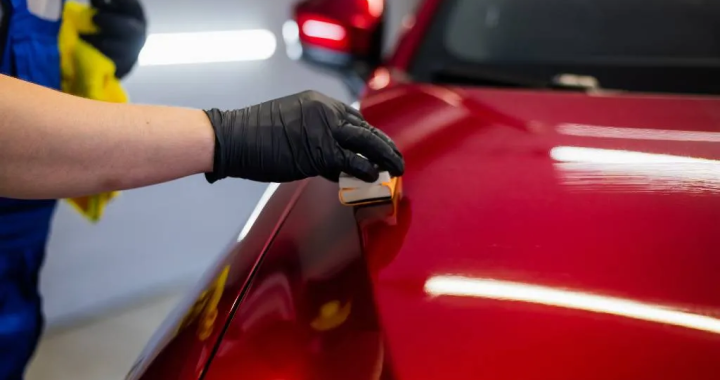How to create quality blog content on WordPress
6 min read
To start blogging, follow these 7 steps and you will be creating content in no time!
- Select your topic.
- Choose a hosting company and create your domain.
- Choose and personalize your theme.
- Make an editorial calendar.
- High-quality content is essential.
- Optimize your posts to be found by search engines
- Add call-to actions
Step 1: Select your topic.
Before you start writing, it is important to understand the purpose of your Powerline blog. Blogs can be a complete website by themselves, but they will be an extension to your business. This helps you narrow down your topic choices, but there are still other things to consider. Finding a topic that is relevant to your industry and business is key to choosing a topic. However, it should be broad enough to cover hundreds of articles.
Consider your target audience when coming up with topics for your blog. Consider the job titles and needs of your target audience to determine what topics would be most popular.
Step 2: Choose a hosting provider to set up your domain.
WordPress will allow you to host your blog and use a robust CMS to publish and manage your content.
There are a few options for how to set it up. Digital Princess Blogs can be created as their own website, as we have already mentioned. If this is the case, you will register a root domain that would look like yourblog.com. However, many businesses want a blog to live in their company’s section.
There are two options if you want your blog included in your company website. Either you can create a subdomain or subdirectories. You can create subdirectories, which are sections of your domain that correspond to specific pages on your website.
Subdomains and subdirectories are fundamentally different
This is because subdirectories have control over where your content is located. Subdomains can be considered as distinct from root domains. This means that instead of adding backlinks to your main site, you are “splitting” them between subdomains and your primary domain. This can reduce the likelihood of your subdomain ranking in content search engines. Subdirectories, on the other hand are part of your root domain so any keywords they rank or backlinks that they receive will increase the authority of your domain.
Step 3: Choose and customize your theme.
You’ll see a default theme activated after installing WordPress. The default theme for WordPress if you have the latest version installed is Twenty Twenty-One. This minimalist theme can be customized using the Gutenberg editor and another WordPress Page Builder.
Read Interesting Articles on The Fall Cast
You can also choose from hundreds of premium WordPress templates through the WordPress theme directory and third-party marketplaces. These themes offer more colour options, sidebars and background options, Google Fonts and layouts.
You can personalize your theme after you have selected your theme. This will ensure that your blog appeals specifically to your audience. You can customize your theme to suit your content. If you are writing about sustainability or the environment, you might choose a palette that is rich in green. For a modern look and easy reading, you might choose a sans serif font if your blog is news-heavy.
Step 4: Create an editorial schedule.
You’ll need to plan
1. how you will publish your content once you start writing?
2. What type of content will your publishing?
3. How is your content flow?
4. Does each piece of content go through a rigorous editing and approval process? How often will you publish?
To avoid being overwhelmed by all these questions, you can make an editorial calendar . An editorial calendar can be used to help content creators plan and manage their work. An editorial calendar allows you to keep track of all your assignments, writers, editors and content types. It also lets you know when due dates are, as well as publish dates.
Step 5: Create quality content
A blog that is successful will have high-quality content. Even the best-designed blogs won’t be able to engage and attract visitors without great content.
Although this idea may seem obvious, the steps involved in creating quality content are not easy. Many factors are involved in content creation, including headings and grammar.
Keyword Research
Once you have created buyer personas and chosen topics to cover, do keyword research. So that you can determine if these topics are more popular. You can determine whether it is worth your time to write WordPress content on a keyword phrase by doing keyword research.
Readability
After you have decided on a topic, the next step is to write readable text that keeps your readers coming back to your blog. You can make your posts as easy-to-read as possible by reducing paragraphs or sentences, avoiding passive voice, using headings and subheadings, as well as using transition words. These strategies will help improve the flow of your blog posts as well as organize large chunks of text.
Hemingway editor will ensure that your writing is of high quality and save you time editing. You can also download the browser extension Grammarly , which will help you avoid spelling and grammar mistakes that could impact your brand’s credibility.
Images
Adding visuals to your blog can also help to improve the user experience. Images can make your blog more memorable and engaging. Images in blog posts with 75-100 words have a 200% share rate . Visual content is also 40% more likely that it will be shared on social media.
Step 6: Optimize posts for search engines
It’s only half of the battle to create and publish high-quality content for your blog. You must optimize blog posts for search engines to improve your ranking and attract new visitors.
Optimizing your meta descriptions and links is one way to achieve this. Because readers can see these elements on the page, they are collectively called on page SEO. Let’s take a quick look at some of these key elements.
Titles and Meta Descriptions
The title and meta description are important in convincing readers to click on your blog post within a SERP. Optimize your titles and meta descriptions by including the keywords that you want to rank for. Ideal is to keep meta descriptions under 160 characters and titles under 60 characters.
Internal Links
Search engines and users will appreciate the links to similar content in your blog posts. It will make it easier for visitors to find your content, and increase their likelihood of staying longer on your site. Search engines will be able to find all your content on a topic. This will increase your chances of being ranked for keywords related to that topic.
Step 7: Add call to actions.
Your content is loved by readers. Your internal links have enabled them to read many more of your posts after they clicked on one of the blog posts from a SERP. These readers shouldn’t be able to leave your site and not convert into leads.
Inserting relevant calls to action in your blog posts is one way to convert readers into leads. CTAs lead visitors to a landing site where they can submit contact information for a resource. CTAs can offer a free ebook on a topic or a discount code to a related product. No matter what the offer is, it must be valuable and not be missed by the reader.
Conclusion
WordPress is a self-contained set of PHP coded files that anyone could download and use to publish content online.
More than 76 million blogs worldwide run on WordPress, and 17 new posts are published on WordPress sites every second. WordPress has all the essential tools you need to set up and manage a self-hosted WordPress blog—no design or development experience needed for starting a blog on this powerful blogging platform.





